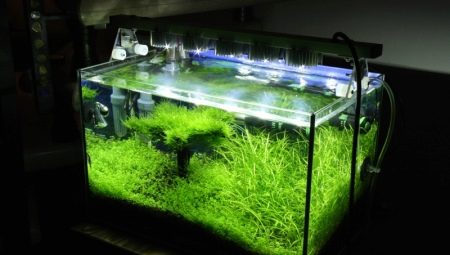Buying an aquarium and the fish themselves is not all, if you are going to seriously conquer the peaks of the aquarium. At a minimum, the capacity should correspond to the concept of a holistic ecosystem with the change of daylight and night, therefore artificial lighting will not hurt you, especially since without it it’s not always easy to see aquarium inhabitants. However, all useful in excessive quantities or with the wrong "reception" becomes harmful, so it makes sense to ask about this topic before acquiring and installing anything.

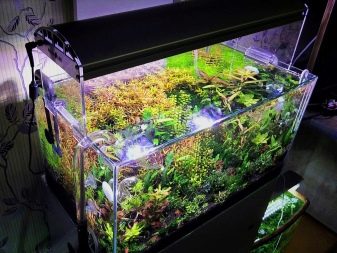

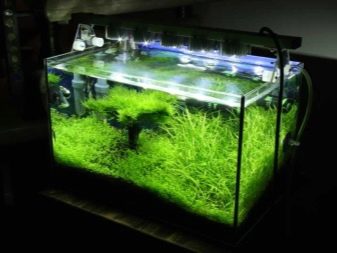
Features and requirements
Some of the inexperienced would argue that he does not need lamps for the aquarium - they say, the fish can be seen without illumination, and deep-sea inhabitants can not be spoiled by the sun anyway. In many ways this is true, but still experts advise using special lighting devices specifically for the formation of a holistic ecosystem. The fish themselves need only change the dark and daylight hours to develop a regime — they don’t have hours, so only by the presence and absence of light do they understand when to relax and are not overworked. To a greater extent, lighting is necessary for vegetation, and you will be very mistaken if you consider that you can do without it.
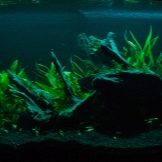

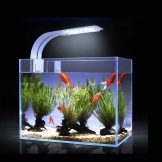
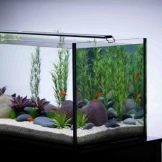
Specific requirements are usually formulated as the following list.
- A lamp is needed not just any, but only one that is specially adapted for the aquarium.It is unacceptable to use an ordinary table lamp - it is completely not adapted to be adjacent to water, and after all, contact of a liquid with electricity is dangerous for the whole house as a whole. A protective cover is usually already included in the structure, but if for some reason it is not necessary, you will have to use a special glass cover for the aquarium, which at the same time protects the fish from an accidental escape. Often, the required lamp is already pre-mounted in the cover.
- The distribution of light should be uniform - there is no point in a lamp that illuminates well and even warms up the upper layers of water a little, but does not have any effect for the remote corners of the aquarium. To solve the problem, special reflectors are used that are evenly mounted in the aquarium in certain places.
- It is important to choose the right lighting power, since both a disadvantage and an excess of light are potentially dangerous. At the same time, each of the inhabitants of the aquarium, whether it be fauna or flora, has its own idea of how much light should be ideally, and the challenge for an aquarium-maker is to find a certain balance that would satisfy all living creatures.
- The light source should not be any one spectrum - the presence of both orange-red and blue-violet lighting is important. For this reason, ordinary incandescent lamps are always rejected - they cannot give a blue-violet spectrum, and even contribute to the heating of water in the upper layers.
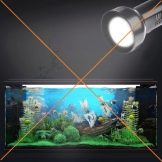

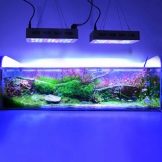
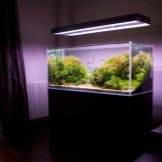
Why is light needed?
Inside the aquarium, as in nature as a whole, everything is interconnected, and only the complete comfort of all the useful inhabitants of the tank allows us to say that the ecosystem is healthy and not at risk. Photosynthesis is of fundamental importance for plant growth, and it is impossible without lighting.
One side, there are aquariums without plants at all and even without any bottom other than glass, on the other hand - this is a clear sign of the aquarium's inexperience and his unwillingness to do thingsall the importance of which he simply does not understand. Plants in the aquarium are perceived by many as a purely aesthetic detail, which makes the underwater world more believable, but the greens must be there for another reason - it processes harmful carbon dioxide and releases oxygen into the water column, which the fish need to breathe. Only a few species of fish are able to swallow air directly from the atmosphere, floating to the surface, because all the rest exist mainly due to vegetation and high-quality aeration. Agree, two options for saturating water with oxygen in any case look better than one.

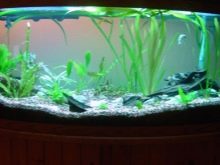
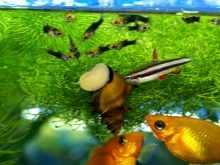
By the way, while the vegetation is in the dark, it gives the completely opposite effect - it absorbs oxygen from the water, so planting greenery and not worrying about the proper amount of light is the shortest way to nowhere.
In addition to aesthetics and oxygen saturation of water, plants can perform some other functions. So, some types of fish have herbivorous habits and will be happy to snack not with your store food, but with fresh herbs growing right there. For the owner, this is also a definite plus - although the pets will not eat pasture forever, they can still be left without any supervision and left for some time. In addition, peace-loving species of fish instinctively seek shelter from predators, while predators, on the contrary, hide all in the same place to watch for a gullible prey. Finally, some species of sensitive plants are able to act as an indicator that the bio-balance in the ecosystem is impaired. If this is obvious before the fish begins to die, the situation can be tried to rectify.
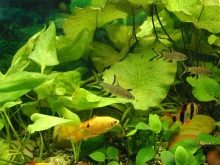

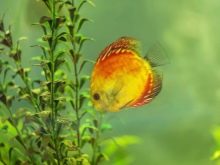
Overview of lamp types
If different underwater inhabitants need different lighting parameters, there is nothing to be surprised that aquarium lamps are different - each variety has its advantages and disadvantages.Each type of equipment has its own optimal scope of application, and although partial interchangeability is present, it is better to make the choice completely consciously, so let's go through the main types of lamps.
Halogen and incandescent lamps are rightly considered the past century. - it is estimated that they actually give more heat than light, and temperature deviations from the norm for fish are undesirable. The fundamental difference between these two species is that the halogen variety is more durable and less often requires replacement. Such equipment has advantages, albeit few in number, - firstly, low cost, and secondly, the similarity of their light to the sun. The disadvantage is obvious: only 3% of the energy consumed is spent on light, while 97% goes into heating. Because of this, you will have to take high-power lamps, and this translates into inadequate electricity bills (especially for incandescent lamps) and leads to even more heating of the aquarium water.

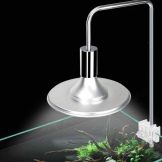
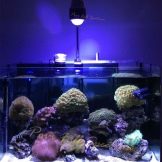

Metal halide lamps should not be confused with ordinary halogen ones - these are just in demand among experienced aquarists, but only on condition that the depth of the reservoir is 60 centimeters or more. The reasons for the popularity of such equipment are understandable - it is inexpensive, it doesn’t consume much electricity, and at the same time they can produce a focused beam of light, and the spectrum from yellow to blue can be selected depending on the model of the lighting device. The huge advantage of such a searchlight is that it is the golden mean - you can see the underwater inhabitants perfectly, and they do not feel any discomfort from it, and indeed the underwater world looks incomparable in the flickering light. But here, not everything is so cloudless - the owner will have to find a way to mount the backlight at least 30 cm from the surface of the water, because this unit heats up very quickly and strongly. Here, even the fans will not always help - after 1-2 hours of operation, the lamp must be turned off, otherwise a temperature distortion is inevitable.
Metal halide lamps are not in vain described as the lot of professionals - they should be handled carefully. First of all, they are not so in demand, because they are optimal for reef aquariums with algae and sea anemones. Touching the lamp or the housing of the lighting device is dangerous - they heat up to such an extent that the likelihood of burns becomes very high. The problem can be partially solved with the help of a fan, which at the same time would solve the issue of turning off the lighting regularly, but then the aquarium should be separated from the lighting device using a glass partition. Finally, it is undesirable to touch the lamp with bare hands - any greasy print heavily affects the quality of light penetration.

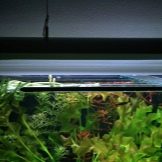

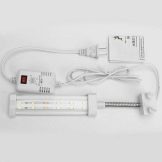
Fluorescent lamps can rightly be called the most popular choice - this is a certain average option, which is suitable in almost all cases. Such equipment consumes little energy, and the light gives good, but at the same time you will have to connect the device through a special inductor or electronic ballast. Although such lamps practically do not heat up, they will have to be changed quite often - at least once a year, or better twice as often. During use, the lamp wears out gradually, and if you use several at once, it is important to replace them gradually, otherwise a sharp change in the degree of illumination can become a shock for underwater inhabitants. With all the benefits, fluorescent lamps require complex disposal due to the presence of mercury vapor, and its aforementioned starter can produce additional noise that interferes with fish.
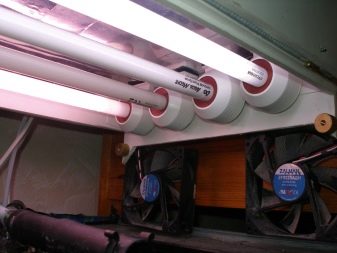


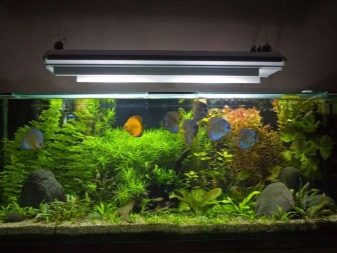
Fluorescent lamps are available in a variety of species, and each of them is suitable for a certain type of ecosystem. In order not to be mistaken, you need to understand the markings, consisting of a slash "/" and two digits. Consider the most popular markings:
- / 03 - bright white “actinic” light, used mainly for marine artificial reservoirs in which corals that are responsive to light are grown;
- / 05 and / 89 - options with amplification of the blue spectrum, which is loved by reefs;
- / 79 - enhanced spectrum of red shades;
- / 77 - perhaps the most universal solution that is often chosen by beginners in the aquarium and just those who do not know how to choose the right lighting for a complex composite ecosystem;
- / 54 - the light, popularly called daylight;
- / 35 - classic white light.
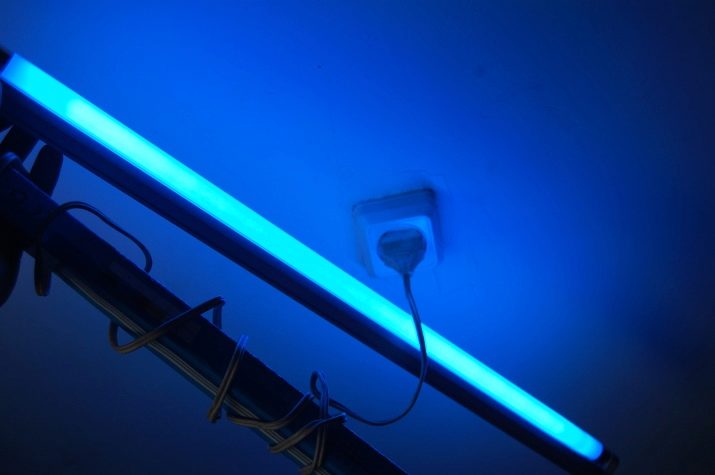
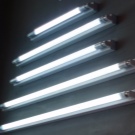
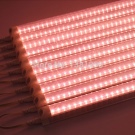
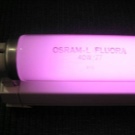
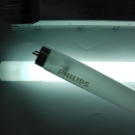
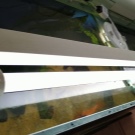
Fluorescent lamps, like fluorescent lamps, have the shape of an elongated bulb or tube. When choosing a model for your aquarium, you must take into account the dimensions of the lighting device, and for this characteristic there is also its own marking. The most common standards are T5 (16 mm in diameter), T8 (26 mm) and T12 (28 mm); at home, the former are most often used, since they are compact.
LED, or a phytolamp, has recently gained more and more popularity in all spheres of human activitywhere lighting is only required, and the aquarium is no exception to the general rule. They have a lot of advantages - they do not flicker at all, they do not heat up, they consume surprisingly little electricity as for the emitted light, they are suitable for fresh and salt water. With them, you will no longer puzzle over the location of the reflectors, as individual submersible LEDs can be used for underwater lighting and evenly scatter your own light.

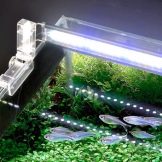
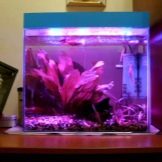
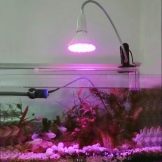
LEDs can be separate and assembled in tapes, panels and even spotlights. Some experimenters do not shy away from “pleasing” the fish even with full-fledged light music created thanks to multi-colored ribbons, but this is hardly useful for underwater inhabitants - they are more likely to experience stress from such flicker and glare than get concrete benefit. At the same time, the aquarium community has not yet reached a consensus on whether the use of LEDs in an aquarium is appropriate at all. Potential disadvantages include the high cost of truly powerful and well-protected lighting devices of this type, as well as the incompletely studied effect of LEDs on living organisms.
Certainly in some cases, none of the above options alone can provide the perfect result. Nobody forces you to choose one or the other - in complex ecosystems, lighting is often used, using several types of lighting devices at once. In combination there are always fluorescent lamps, the rest of the listed types (except for absolutely irresponsible incandescent lamps) complement them in one or another combination. Remember that the main task is almost always to find a light that resembles the sun as much as possible.
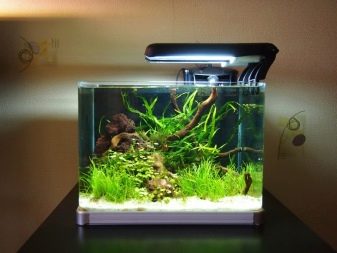
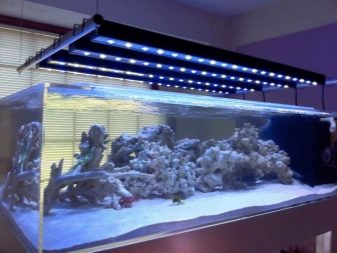
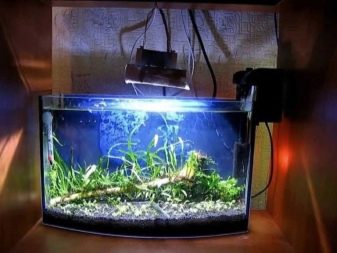

Rating of manufacturers of lamps
Theoretically, you can use any lamps of these types, but objectively you should choose products only from those manufacturers who make lighting products specifically for aquariums. Only such a purchase guarantees the complete safety of underwater residents and provides all their needs without risk to the lamp itself, which is in dangerously close to the water. It is worth paying attention to a number of companies that have earned an excellent reputation in the manufacture of equipment for artificial ponds.
- Sylvania. This company is known for its full-spectrum lamps, which plausibly imitate sunlight, not only externally, but also in terms of physiological processes in flora and fauna. The manufacturer emphasizes the red and blue spectra needed by plants.
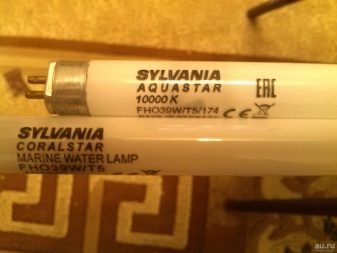

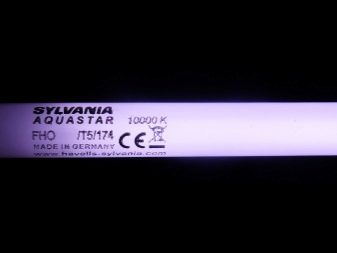

- Osram. The Czech company, whose products in our country are not sold everywhere, but is considered almost an example of a combination of price and quality.For little money, you can choose a device of any type and spectrum that will last a long time and will definitely not deteriorate before the expected term of wear.


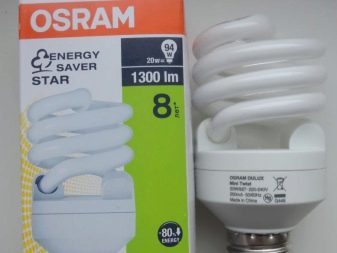
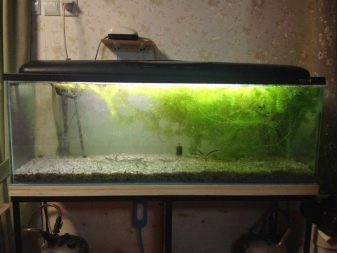
- Hagen. Another brand offering the consumer a huge range of lighting products for any aquarium (and terrarium) needs. The products of this brand are considered one of the most durable, frequent replacement of equipment is not needed.
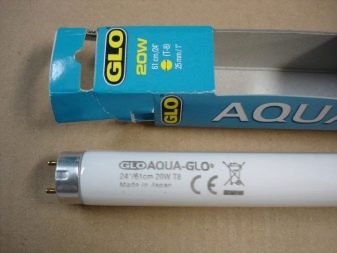
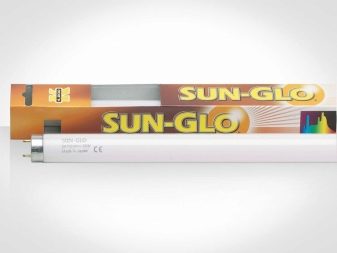
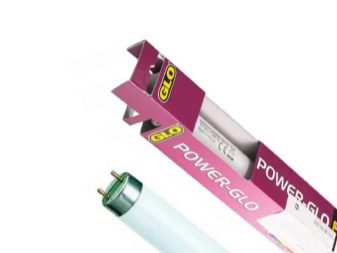
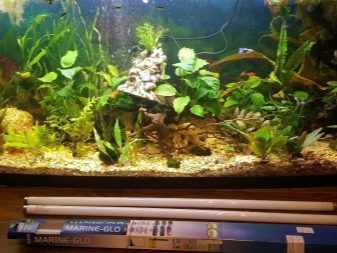
- JBL. This brand also offers diverse lamps, but in general, the company focuses on the production of the most powerful and brightest equipment. Often, it is her products that are recommended for arranging aquariums with tropical animals.


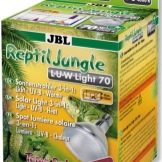
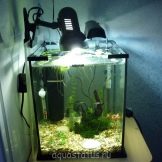
How to choose?
The choice of a lighting device for an aquarium depends not only on its volume and the needs of its inhabitants, but also on what needs the aquarist himself wants to satisfy. Take even the same spectrum - it can be red-orange (warm light), green or violet-blue (cold light), and a thinking beginner probably wonders which one is better. The correct answer is no: it all depends on what goal you are pursuing.
Phytolamps in a broader sense are called LEDs that promote enhanced plant growth - they give light, so necessary for normal photosynthesis, but at the same time they do not heat water and do not burn foliage, even if they are located in the thick of greenery. By the way, they are also completely safe for fish, because their use in the aquarium is 100% appropriate. It is important to know that plants need both a red-orange and a blue-violet spectrum, because an aquarist who wants all the best for his herbalist is required to provide lighting in these two spectra.
Green spectrum lamps are used purely for decorative purposes - they effectively highlight the fish, making their shape even more fascinating.
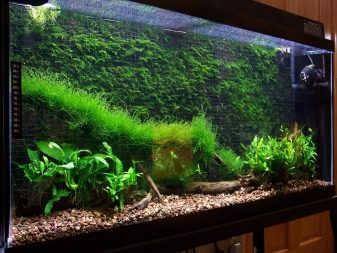

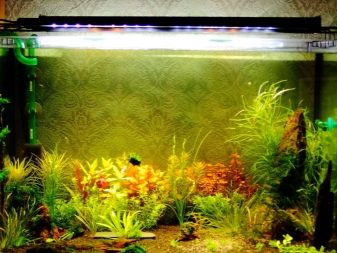
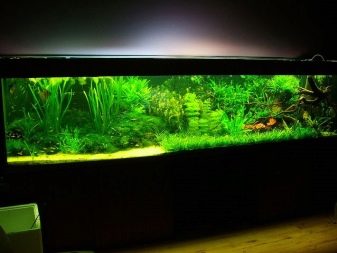
Imagine the most beautiful aquarium with shimmering water that you have ever seen - this is the visual effect that a green lamp gives. For plants, its light is approximately useless, because it is usually used only where there is little or no greenery.
Of course, in the case of most aquariums, I want to get both advantages - to achieve plant growth and improve the beauty of the underwater world. To kill two birds with one stone, use full-spectrum lamps - such equipment can solve both problems. At the same time, the light emitted has a white color, it is very similar to ordinary daylight, emitted by the sun.
Separately, there are also lamps for marine aquariums, but their difference usually consists only in increased powerwhich is needed to reach significant depths. At the same time, some expensive models can even imitate moonlight, because your home underwater world will be beautiful at any time of the day.
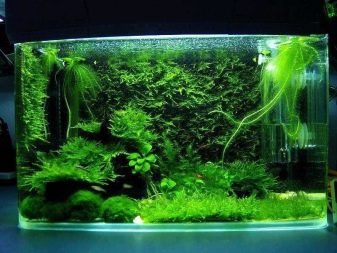
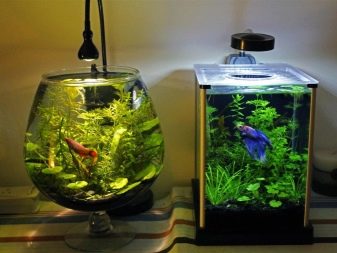
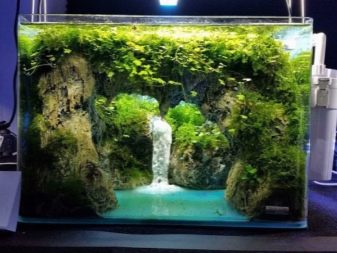
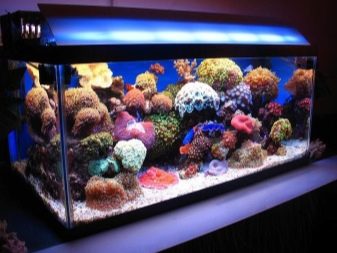
Light calculation
It’s not so easy to determine exactly how much light the underwater inhabitants need. It is possible to calculate the power of devices only taking into account numerous parameters, including the type of water (saline or fresh), the presence or absence of plants and their quantity, as well as lighting requirements, the size of the container and its depth, and even the color of the water. Beginners do not bother with all this, and there is no point in it if your ecosystem is quite simple, but you need to be guided by volume and depth.
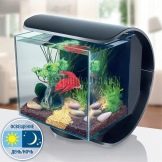
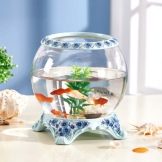
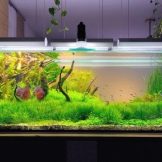
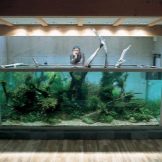
Volume can not accurately indicate the correct amount of lighting, but it makes it possible to navigate approximately. In this case, not the entire volume of the vessel as such is considered, namely the amount of water, so that the air gap and the bottom soil are not included in the calculations. Therefore, if in your aquarium 200 liters of water is only 100 liters, then gently push off precisely from the second indicator. The calculation of the power of lighting devices is made as if your device was a classic incandescent lamp.
- If there is no vegetation at all in the tank, then the backlighting can be minimal - purely so that you can see your own pets. Approximate power of 0.1-0.3 watts per liter should be enough.
- Many fish, and algae, do not really like the sun - they like the shadow more. In this case, a little more light is needed, but still a little - 0.2-0.4 W / l.
- The average value for an ordinary aquarium is 0.4-0.5 W / l. However, for ecosystems with a large amount of greenery, this is not very good - plants will grow quite slowly and get an elongated shape, as they are drawn to light.
- A full-fledged herbalist with thickets, where the eye is pleased not only with fish, but also with the underwater flora, requires lighting at the level of 0.5-0.8 W / l.
- The abundance of plants that require bright lighting makes the aquarist acquire the most powerful lighting devices, consuming 0.8-1 W per liter of water.


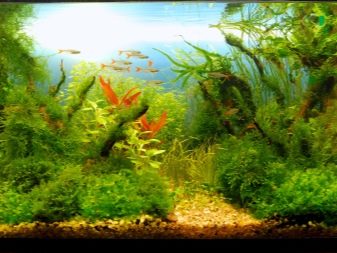
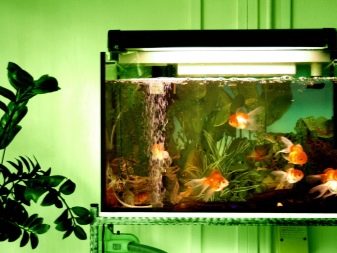
We multiply these figures by the volume of aquarium water and obtain the desired power of the lighting fixtures. So, for a small aquarium with 30 liters of water, in which there was no place for plants, you need a power of only 3-9 W / h, but it, turned into a full-fledged herbalist with photophilous plants, will require 24-30 W / h. By analogy, the amount of lighting is calculated for a large aquarium of 200 liters - it is approximately from 20 to 200 watts hourly.
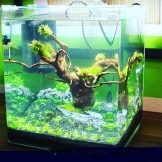

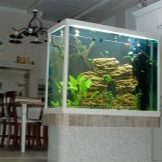

In this case, almost no one uses incandescent lamps today, and you can calculate the power for the remaining types of lamps in the proportion 15: 3: 1, where the first value is an incandescent lamp, the second is a fluorescent lamp, and the third is LEDs. At the same time, the proportion between incandescent and fluorescent lamps is always the same, but LEDs for a truly striking result still gradually increase the proportion, and for the analogue of 180 watts of incandescent LEDs are required not by 12, but by 18 Watts.
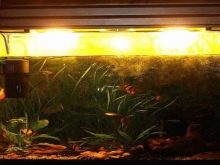
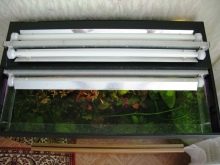
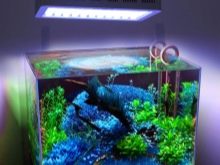
Location Rules
The most common location of lighting devices is above, above water - they are often mounted directly in the lid. This installation method is convenient in that you can use any type of lamp - both conventional and elongated. In order for the emitted light to spread evenly throughout the aquarium, reflectors are also installed here, thanks to which the lighting of the water column becomes uniform.
Some of the above types of lamps, in addition to light, also provide completely unnecessary heating, and this problem has two ways to solve - either install nearby fans of sufficient power, or specially raise the lighting devices higher and away from water. In such cases, it is necessary to assemble a complete lighting mast from suspensions and stops.
The location of the light above is considered optimal, because it resembles natural conditions, but with this arrangement, the light does not always reach the bottom. The problem can be solved both by increasing the power of the lamps, and by adding additional elements on the walls or even near the bottom. Among other things, for decorative purposes, lighting is mounted even under the bottom or in the form of a searchlight aimed at the specific shape of the bottom relief.

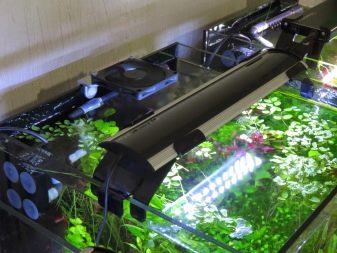
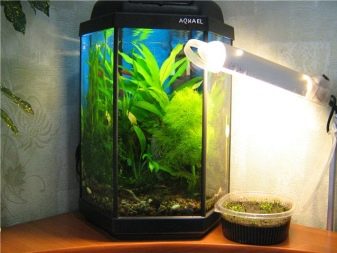
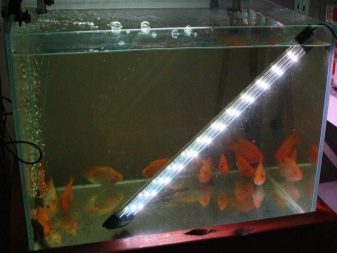
Timer Application
Lighting is not necessary for the aquarium around the clock - it imitates the change of day and night, which means that it should turn on and off with a certain regularity, giving the living creatures a signal to rest. Of course, you can do this manually, but then you have to strictly follow the regime, constantly be at home at the same time and not be distracted so as not to break the schedule. Naturally, this is too complicated, therefore it is more reasonable to use a timer.
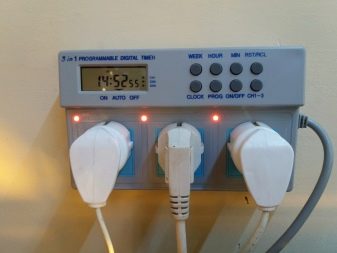

Devices of this type provide timely supply and shutdown of electricity. According to the principle of action, they are divided into mechanical and electronic.
The mechanical timer works by analogy with a mechanical watch, its huge plus is that it is independent of power failures - if only it were at the moment the light was turned on.It is impossible to knock down the settings of such a unit, but, like a real watch, it will have to be started regularly. Thus, the device allows you to skip turning it on or off, but in any case, you must “warn” the mechanism about it.
An electronic timer is more expensive, and in the event of a power outage, cheap models can “forget” all the settings that you have so carefully set. Nevertheless, electronics can be programmed, so you can stay away with it for a long time - a good model can be programmed to always observe the same mode, moreover, with the automatic alternation of long and short days.
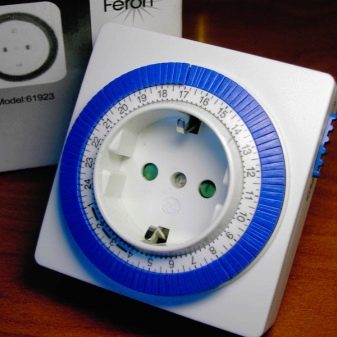
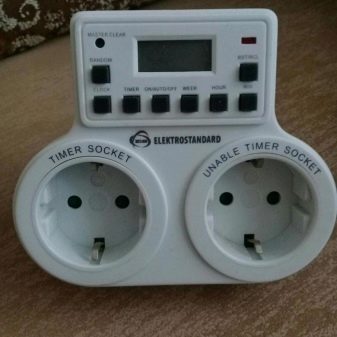
On how to choose a lamp in the aquarium, see the next video.
